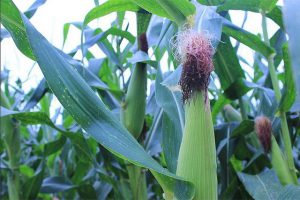To understand how common crops respond to changes in climate, some researchers at the University of Minnesota have built a sophisticated climate-controlled laboratory for studying how crops like corn respond to changes in temperature, carbon dioxide concentration, and rainfall. I was amazed at how carefully they had to put together the lab, for example in painstakingly reconstructing soil profiles to match those in the real world.
Here is how they describe it in an article in the Minneapolis Star Tribune: “The setting for the experiments is a state-of-the-art greenhouse addition on the University’s St. Paul campus, funded mainly by the National Science Foundation. Researchers have constructed huge chest-high planters that contain 55 inches of soil excavated layer by layer from a traditional crop farm near Kenyon in southeastern Minnesota. To match the soil density, they painstakingly installed the layers in the same order within the containers, one inch at a time.”
While they don’t have results yet, the greenhouse setup will allow them to test three crops a year using lights that reproduce the characteristics of summer sunlight. The tests will see how different varieties of corn respond to varying climate conditions.
